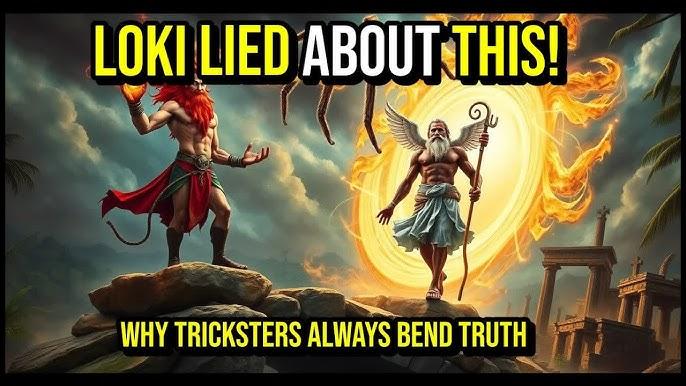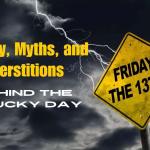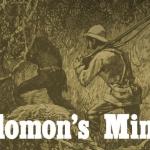Posted At: Mar 03, 2025 - 918 Views

Introduction
The Trickster archetype is one of the most fascinating figures in mythology, appearing across cultures with unique yet similar characteristics. Two prominent tricksters—Loki from Norse mythology and Anansi from African folklore—exemplify the cunning, deceptive, and transformative nature of this archetype. However, while both figures use trickery, their motivations, moral alignments, and cultural significance differ significantly.
This study explores how Loki’s chaotic influence contrasts with Anansi’s wisdom and societal benefit, showcasing the diverse roles of tricksters in mythology.
🚀 Download the Full Analysis (PDF): Click Here
1. Understanding the Trickster Archetype
📌 Key Insight: Tricksters disrupt order, challenge authority, and use deception for personal or communal gain.
🔹 Characteristics of Trickster Figures:
✔ Masters of deception and illusion.
✔ Use intelligence, humor, and cunning to manipulate situations.
✔ Often exist between good and evil, serving as both heroes and disruptors.
✔ Shape cultural narratives through their actions.
💡 Takeaway: Tricksters serve as agents of change, whether for destruction or enlightenment.
2. Loki: The Trickster of Chaos & Deception
📌 Key Insight: Loki represents disorder, mischief, and the forces of destruction within Norse mythology.
🔹 Loki’s Traits & Symbolism:
✔ A shape-shifter who can change his appearance at will.
✔ Uses trickery for personal amusement and selfish gain.
✔ Associated with chaos, betrayal, and the downfall of the gods.
🔹 Loki’s Most Notorious Deception:
✔ He orchestrates the death of Baldr, the beloved Norse god of light, leading to Ragnarok (the apocalypse).
✔ His schemes destabilize divine order, causing irreversible destruction.
💡 Takeaway: Loki’s deception serves no higher purpose—his chaos fuels destruction rather than societal growth.
3. Anansi: The Trickster of Wisdom & Strategy
📌 Key Insight: Unlike Loki, Anansi’s trickery is often used to benefit his community, not just himself.
🔹 Anansi’s Traits & Symbolism:
✔ Takes the form of a spider, symbolizing cleverness and creativity.
✔ Uses intelligence to outsmart stronger opponents.
✔ Seeks wisdom, stories, and survival for his people.
🔹 Anansi’s Trickery for the Greater Good:
✔ Tricks powerful beings to steal and share wisdom and stories with humanity.
✔ His tricks often involve strategic thinking rather than pure deceit.
💡 Takeaway: Anansi’s deception has a purpose—his actions uplift and educate rather than destroy.
4. Loki vs. Anansi: Key Differences & Similarities
📌 Key Insight: Both figures embody trickster qualities, but their motives and consequences differ significantly.
| Aspect | Loki (Norse Mythology) | Anansi (African Folklore) |
|---|---|---|
| Motivation | Personal amusement, chaos, revenge | Gaining wisdom, survival, benefiting society |
| Moral Alignment | Mostly malevolent, destructive | Often benevolent, problem-solving |
| Outcome of Tricks | Causes downfall and destruction | Spreads knowledge and helps the community |
| Symbolism | Chaos, mischief, apocalypse | Wisdom, strategy, resourcefulness |
💡 Conclusion: Loki is a destructive force in mythology, while Anansi is a constructive trickster, using deception for a higher purpose.
5. The Trickster’s Role in Cultural Narratives
✔ Norse Mythology: Loki represents chaotic forces that disrupt divine order.
✔ African Folklore: Anansi represents wisdom, adaptation, and intelligence in survival.
✔ Modern Relevance: Tricksters still appear in literature, film, and pop culture as figures who challenge authority and redefine norms.
💡 Best Practice: Understanding archetypes like Loki and Anansi deepens our appreciation of mythology’s role in shaping cultural values.
Conclusion
While both Loki and Anansi embody the trickster archetype, their roles in mythology differ significantly. Loki’s trickery leads to chaos and destruction, while Anansi’s deception is strategic, often bringing wisdom and prosperity to his people. This contrast highlights how cultural context shapes the portrayal of trickster figures, influencing their impact on societal narratives.
📥 Download Full Analysis (PDF): Click Here
Related Mythology & Archetype Resources 📚
🔹 The Trickster in Mythology: A Comparative Study
🔹 Norse Mythology’s Loki vs. Other Trickster Figures
🔹 Anansi’s Legacy in African & Caribbean Folklore
📌 Need expert insights on mythology and archetypes? 🚀 Our professional writers at Highlander Writers can assist with comparative mythology, folklore research, and literature analysis!
Leave a comment
Your email address will not be published. Required fields are marked *










